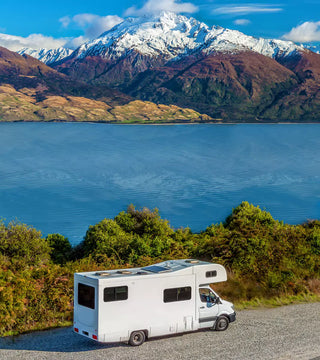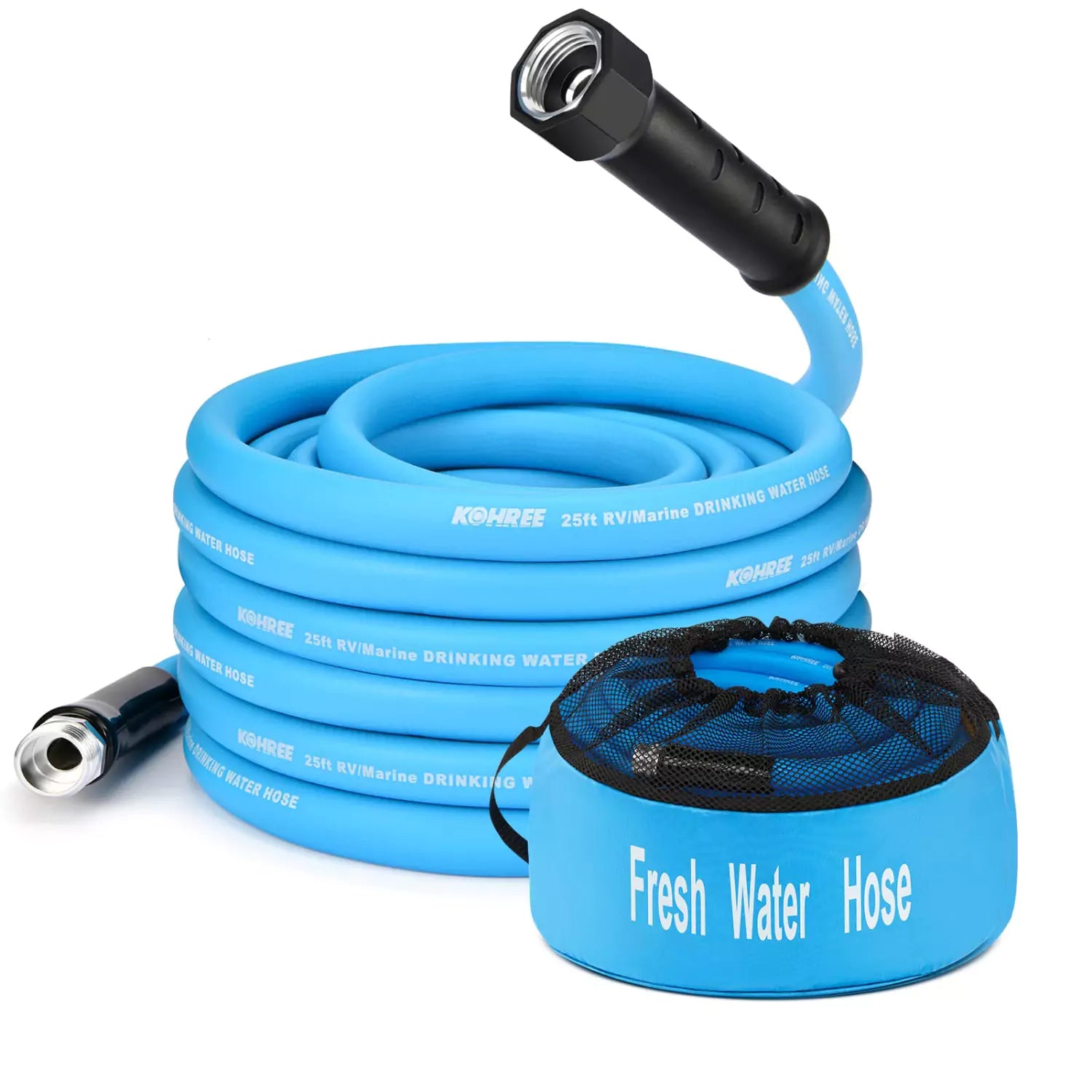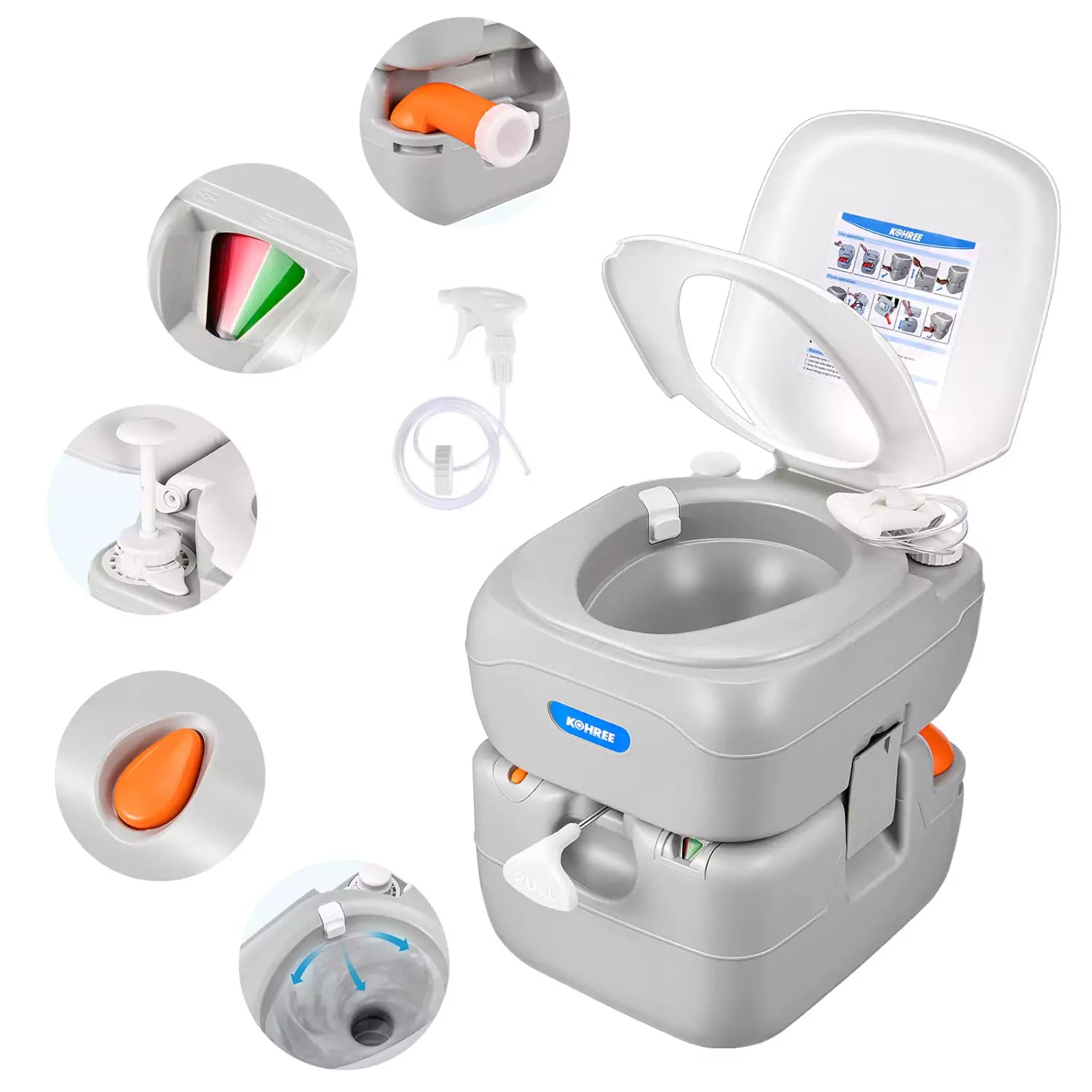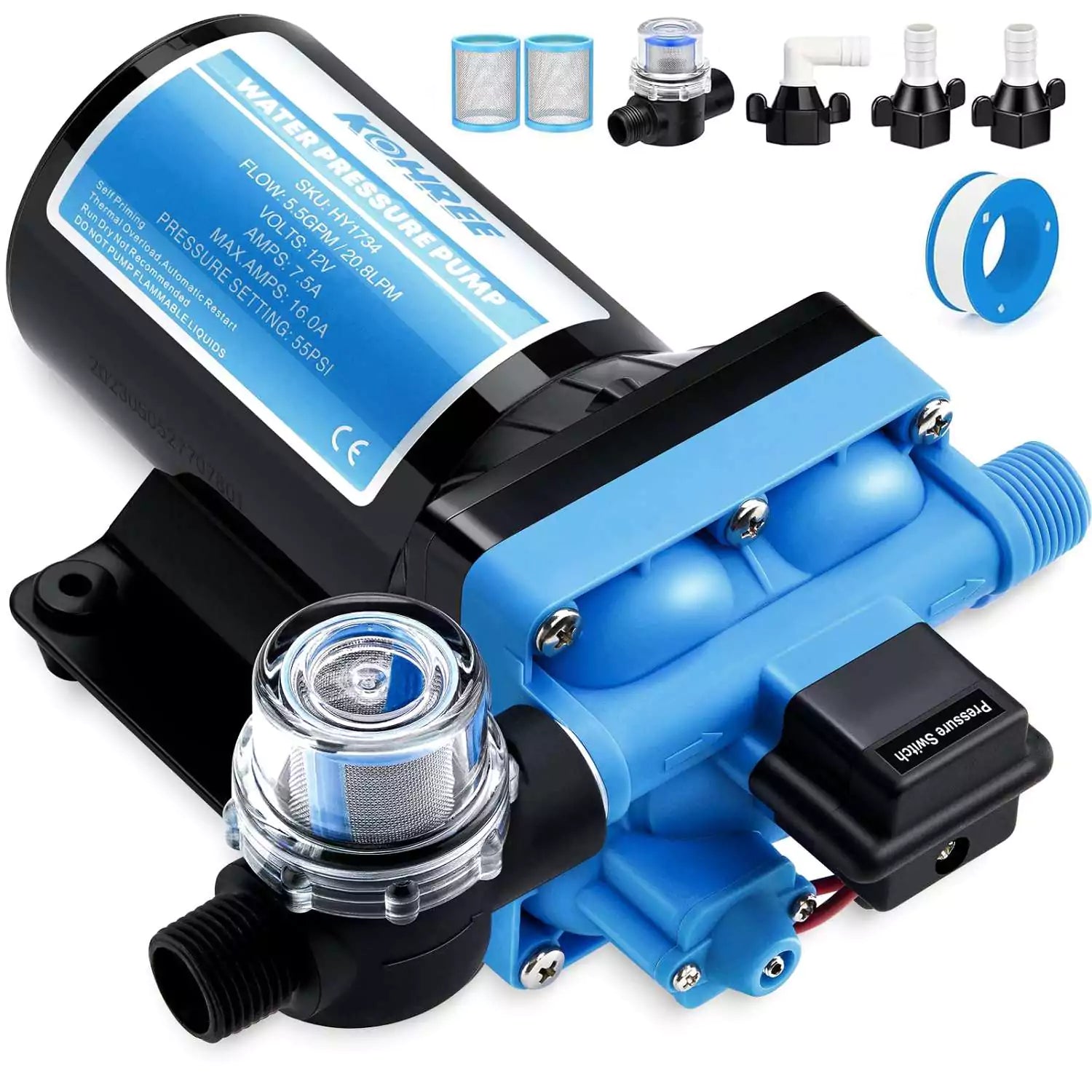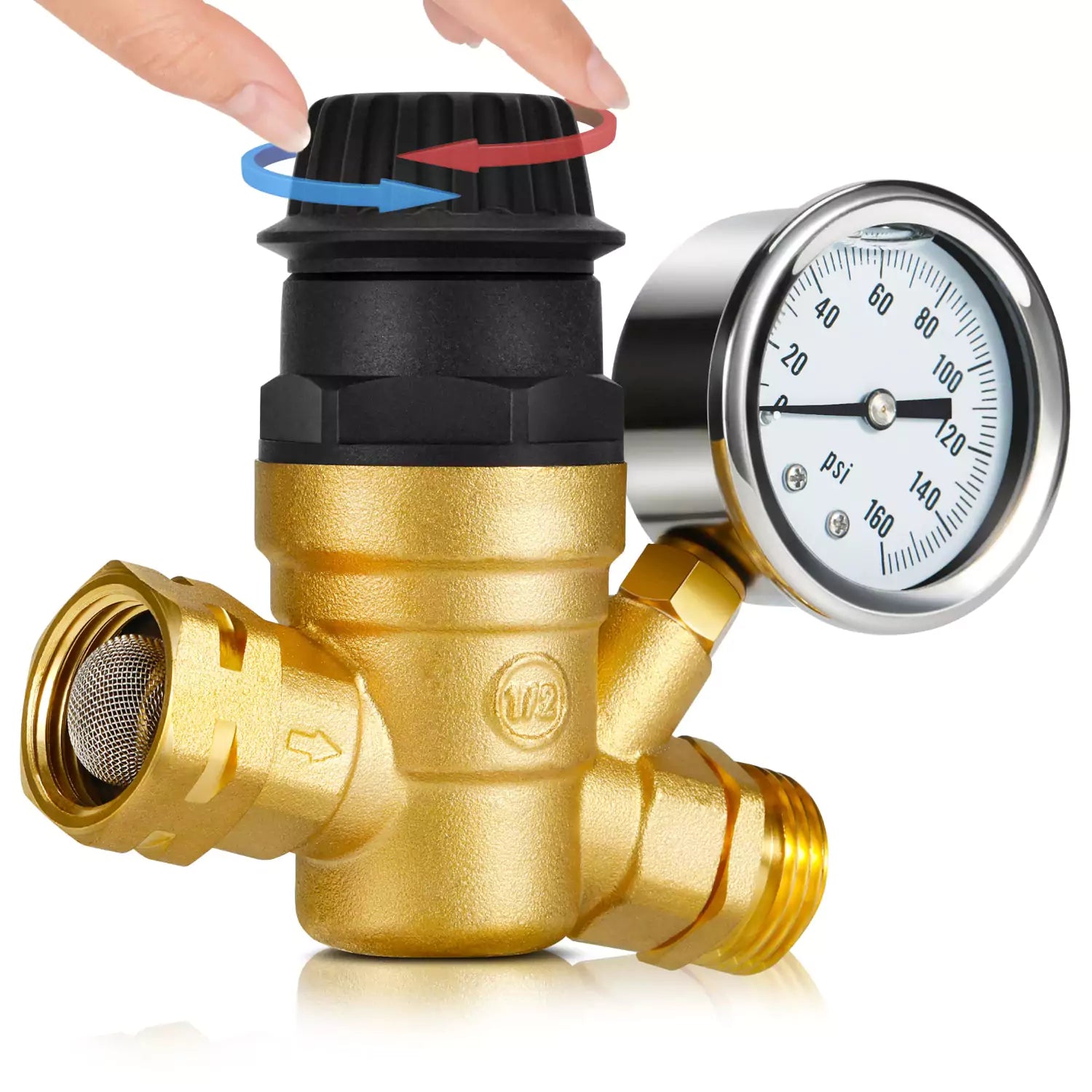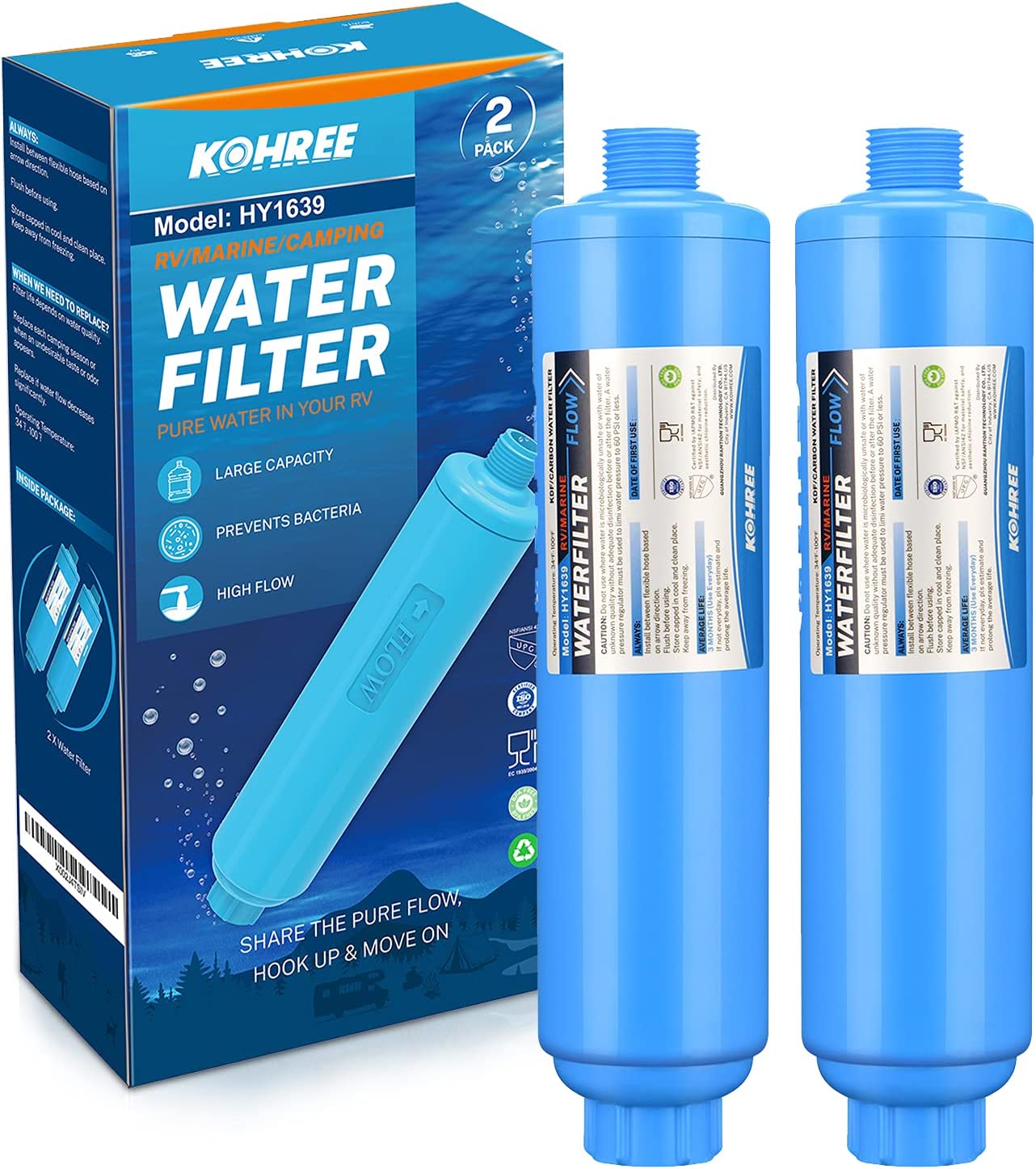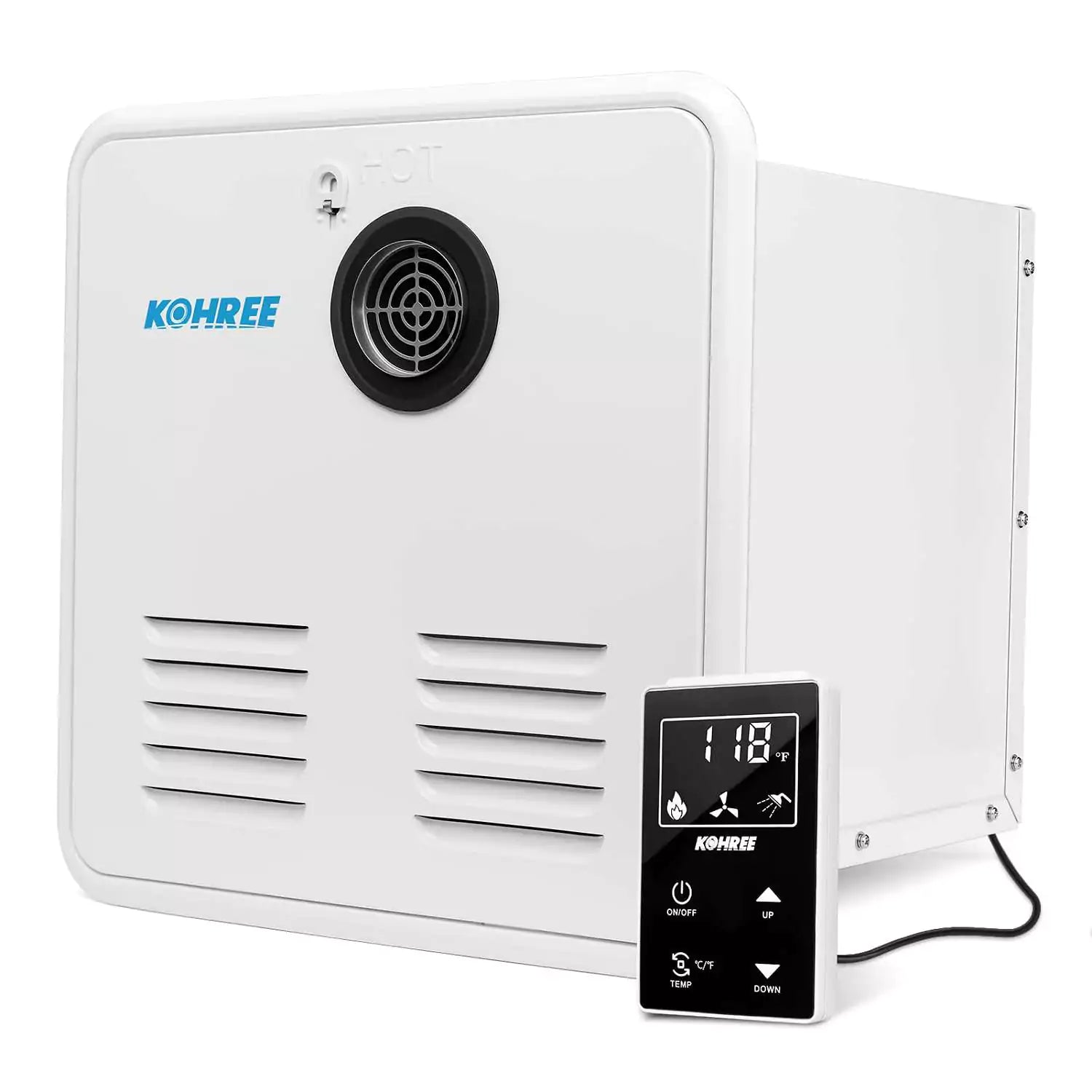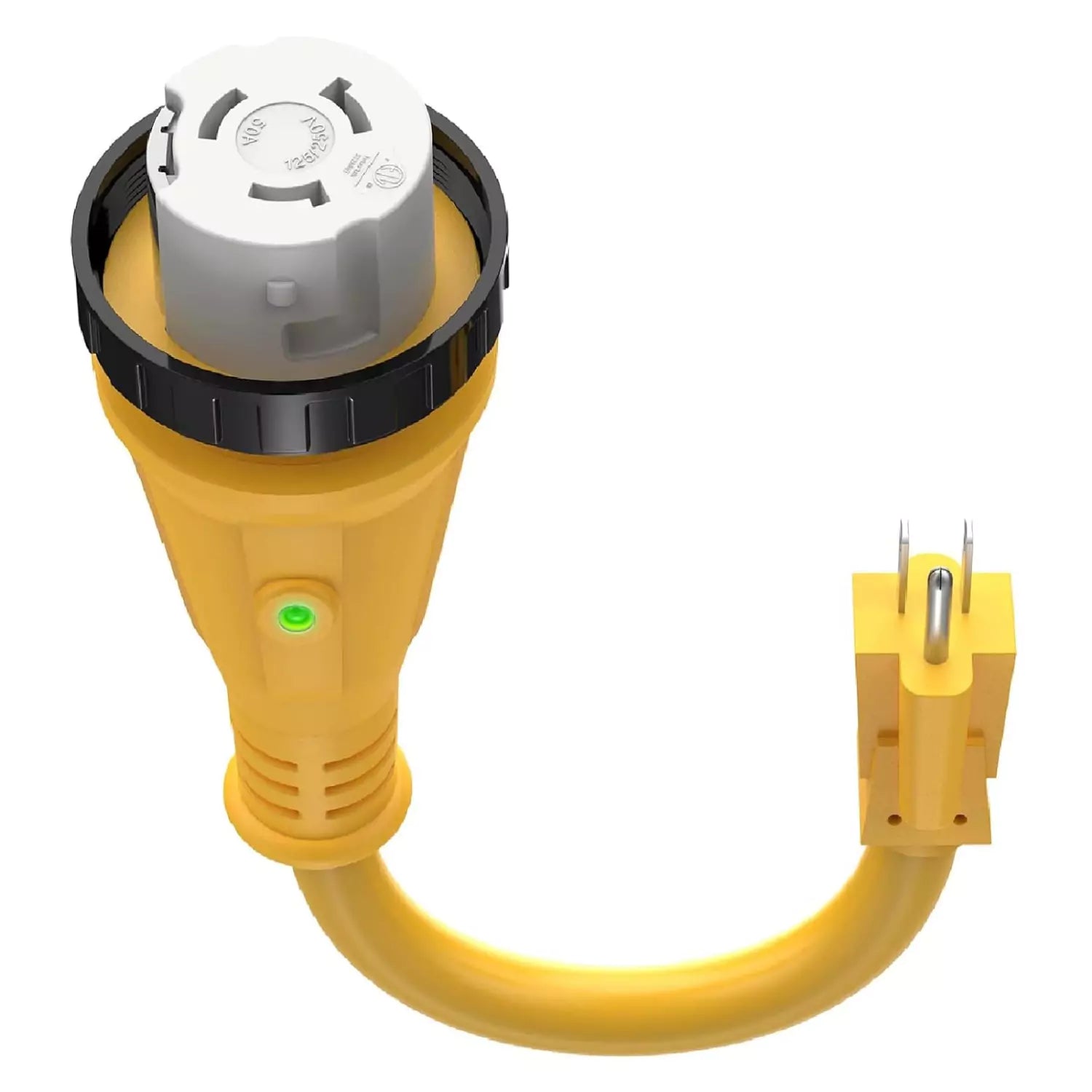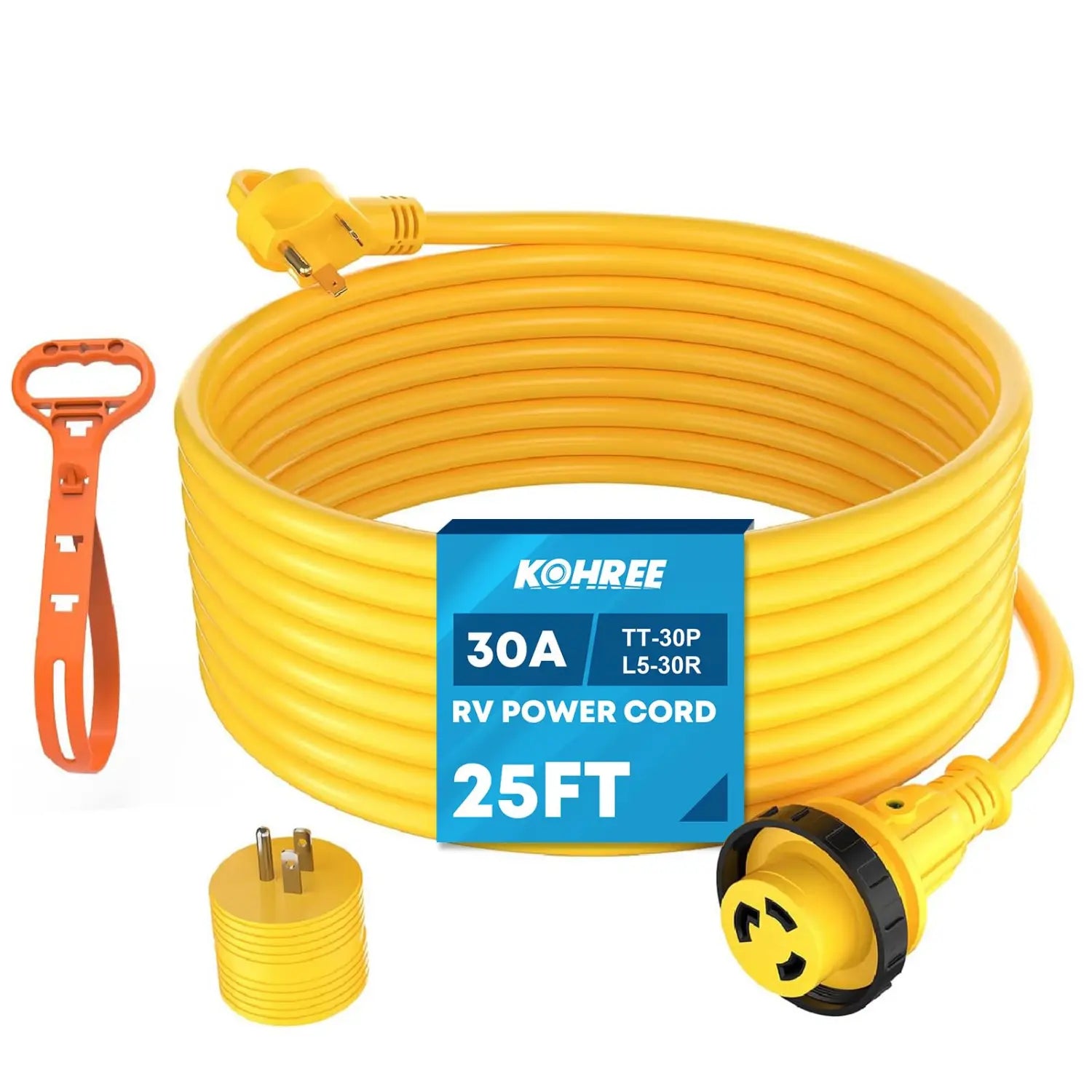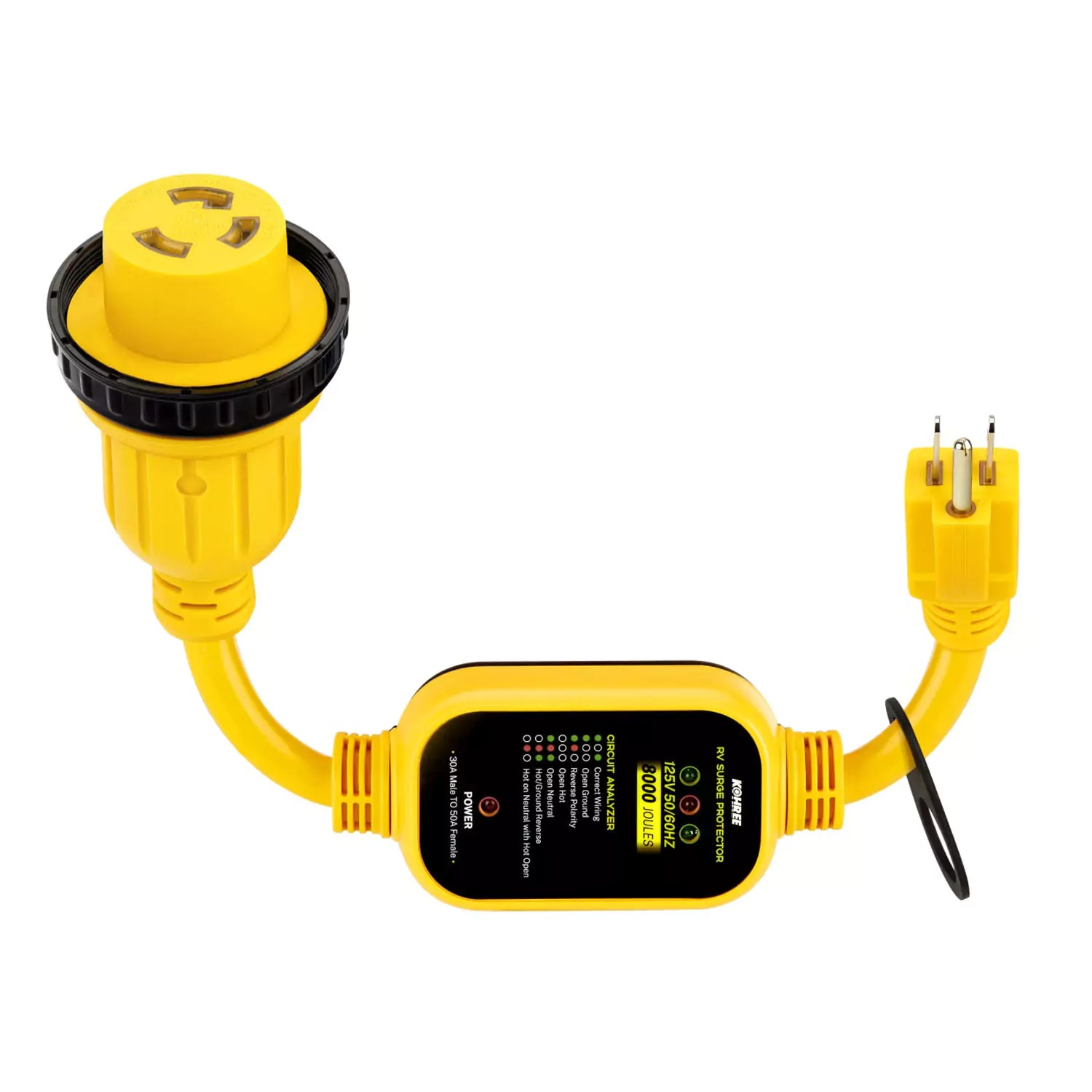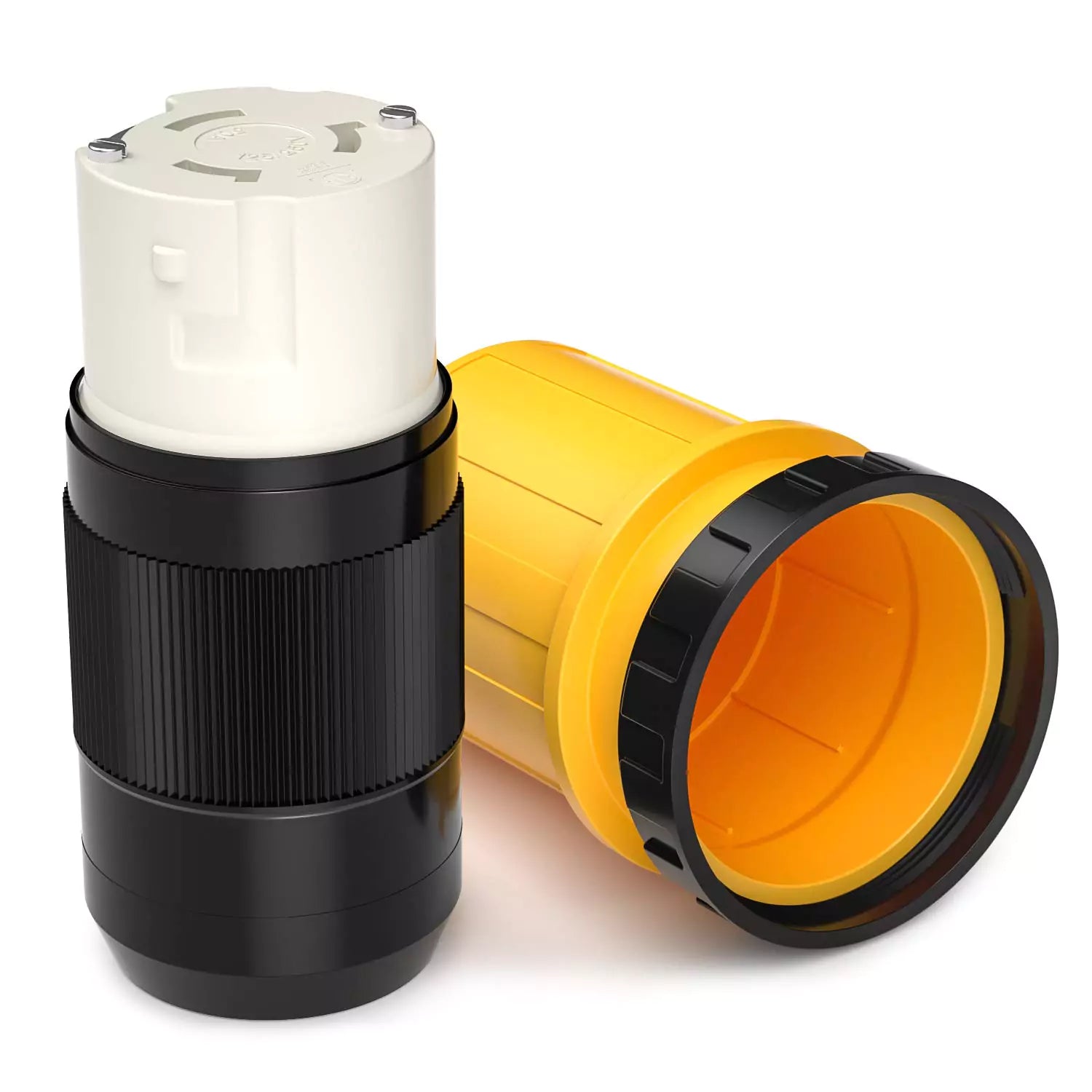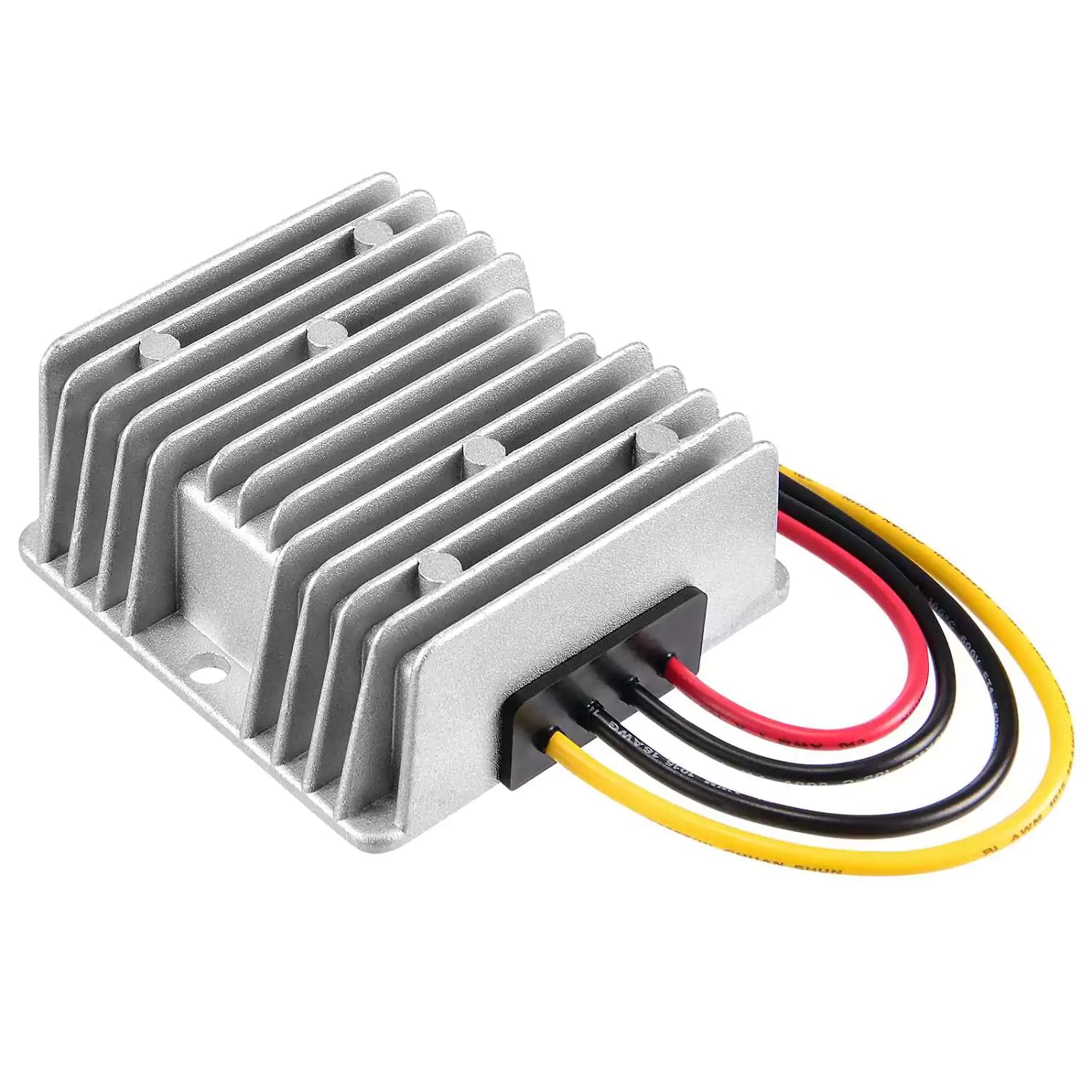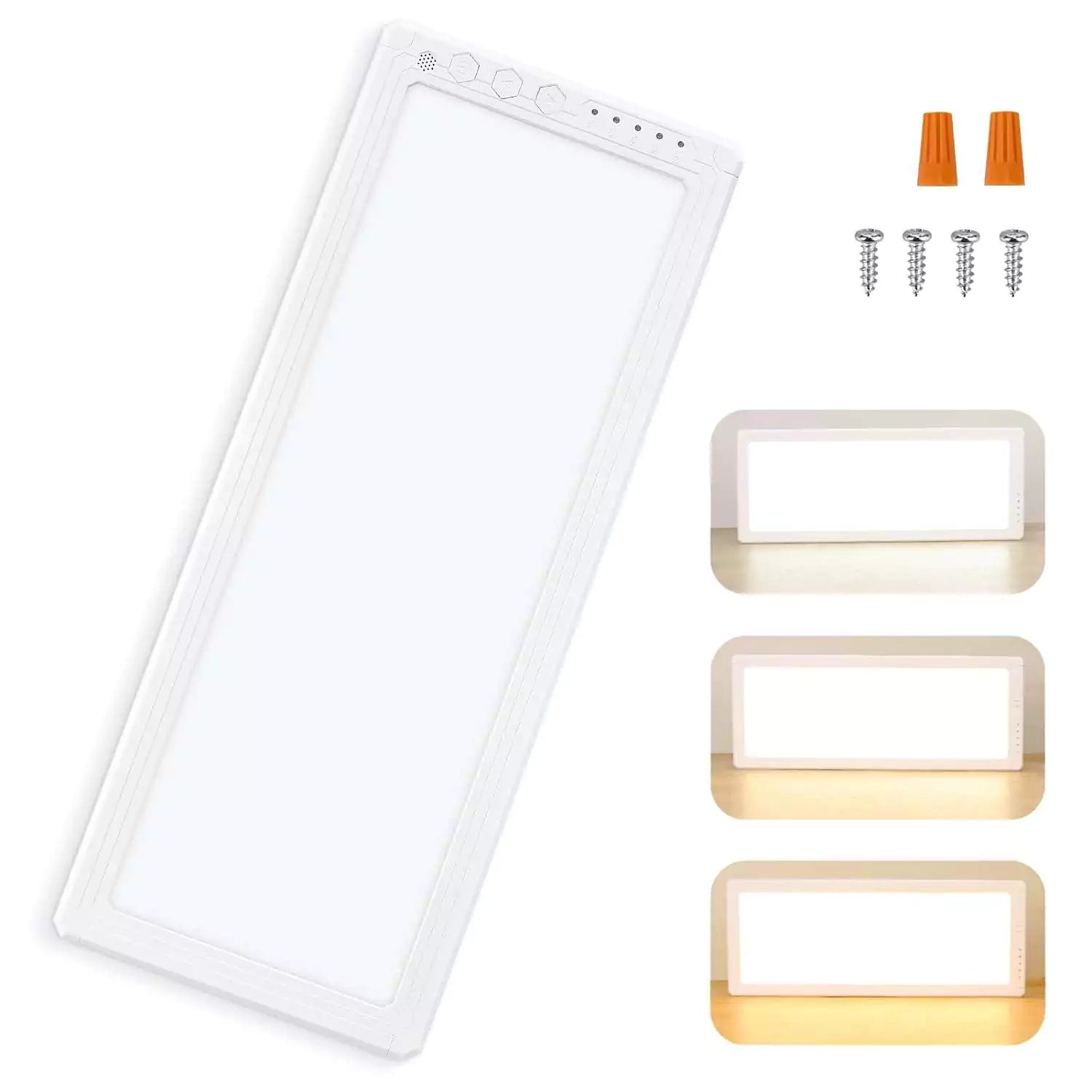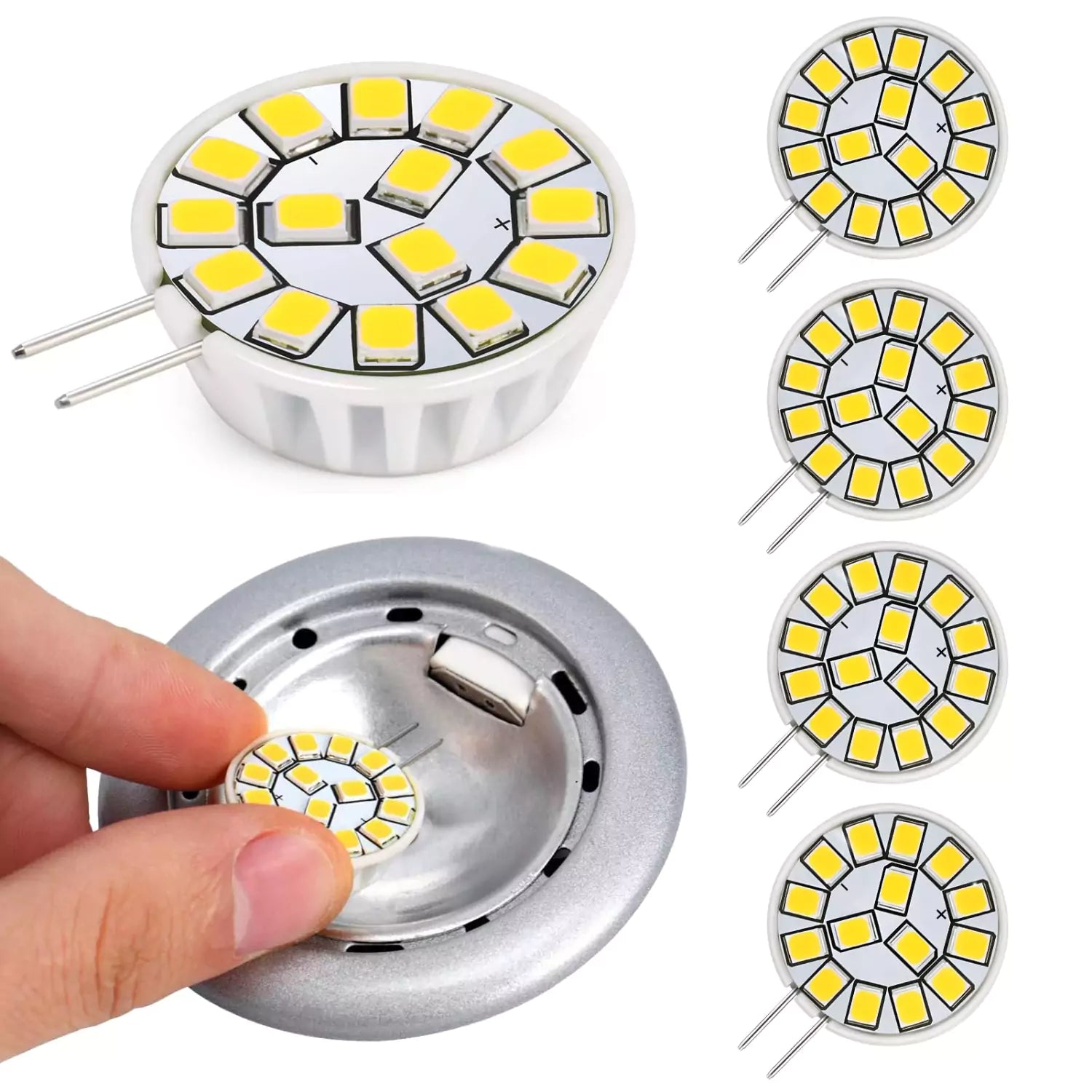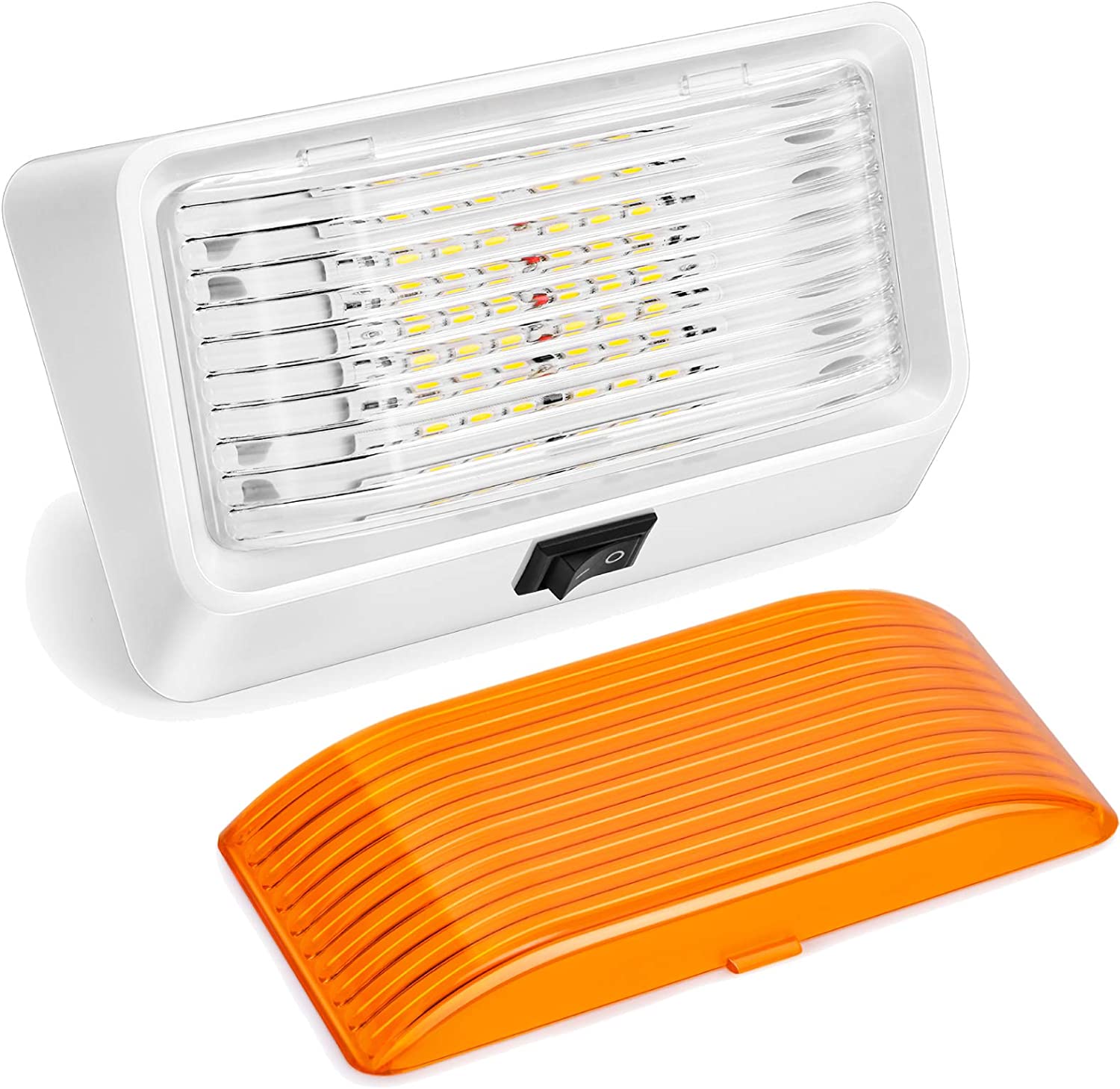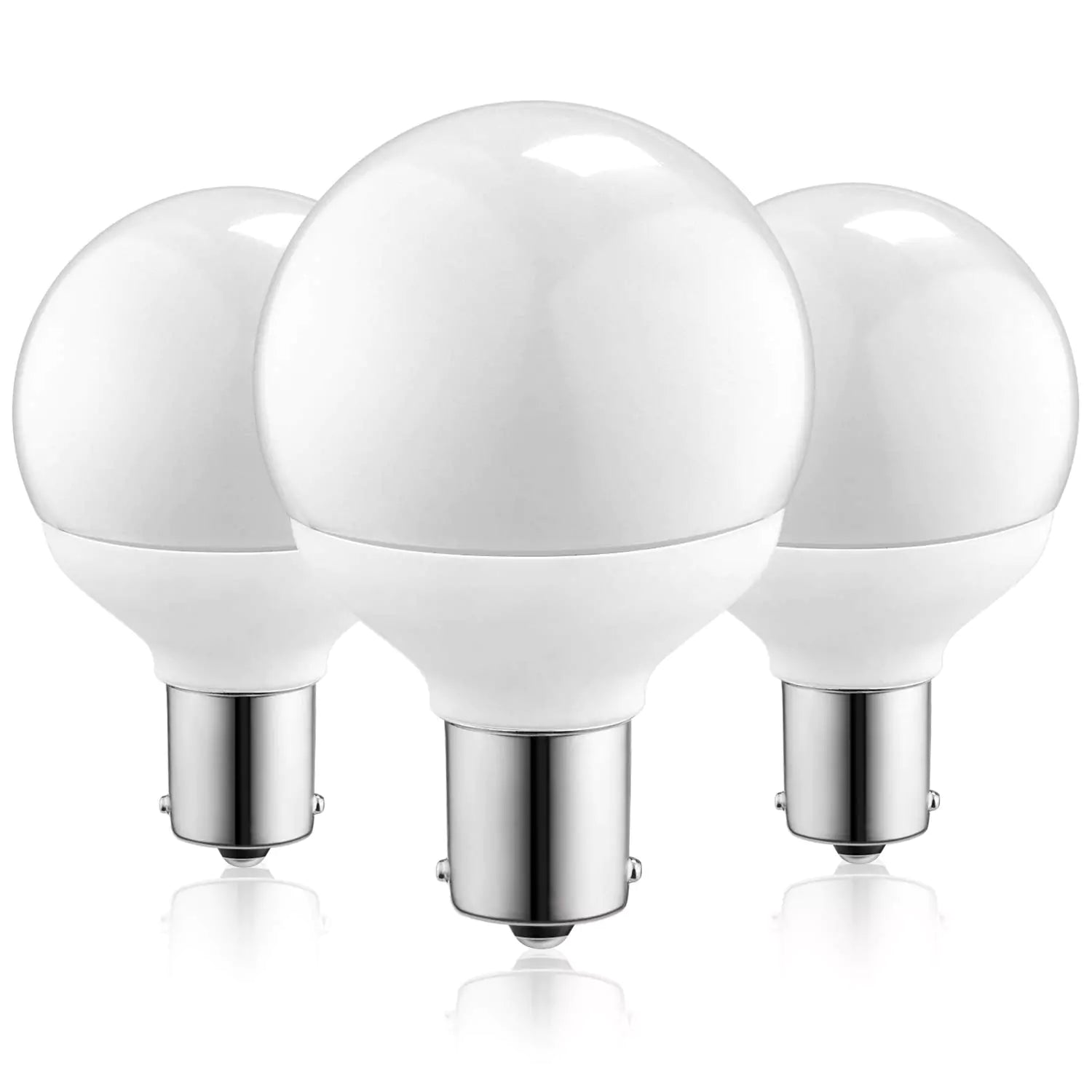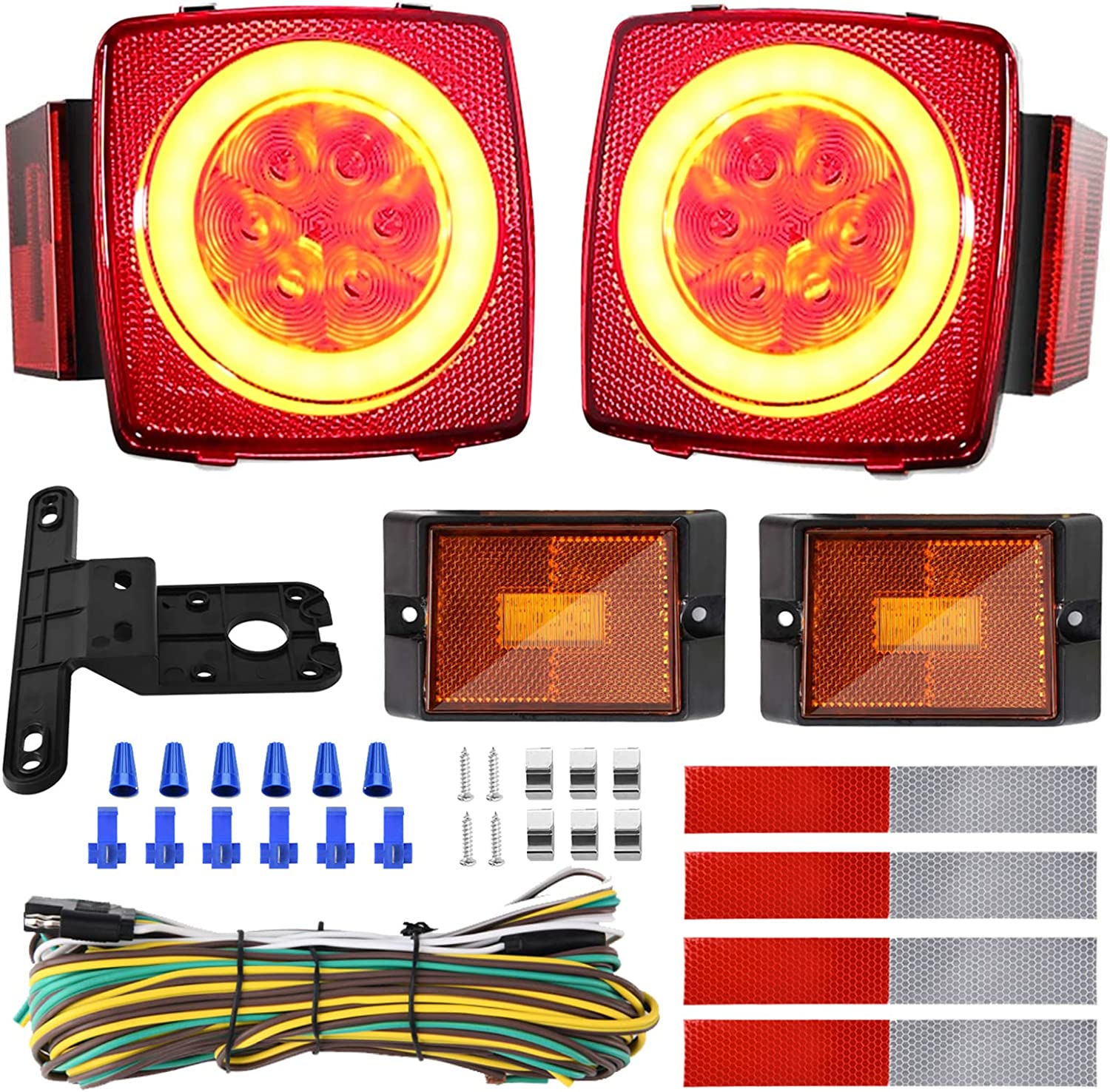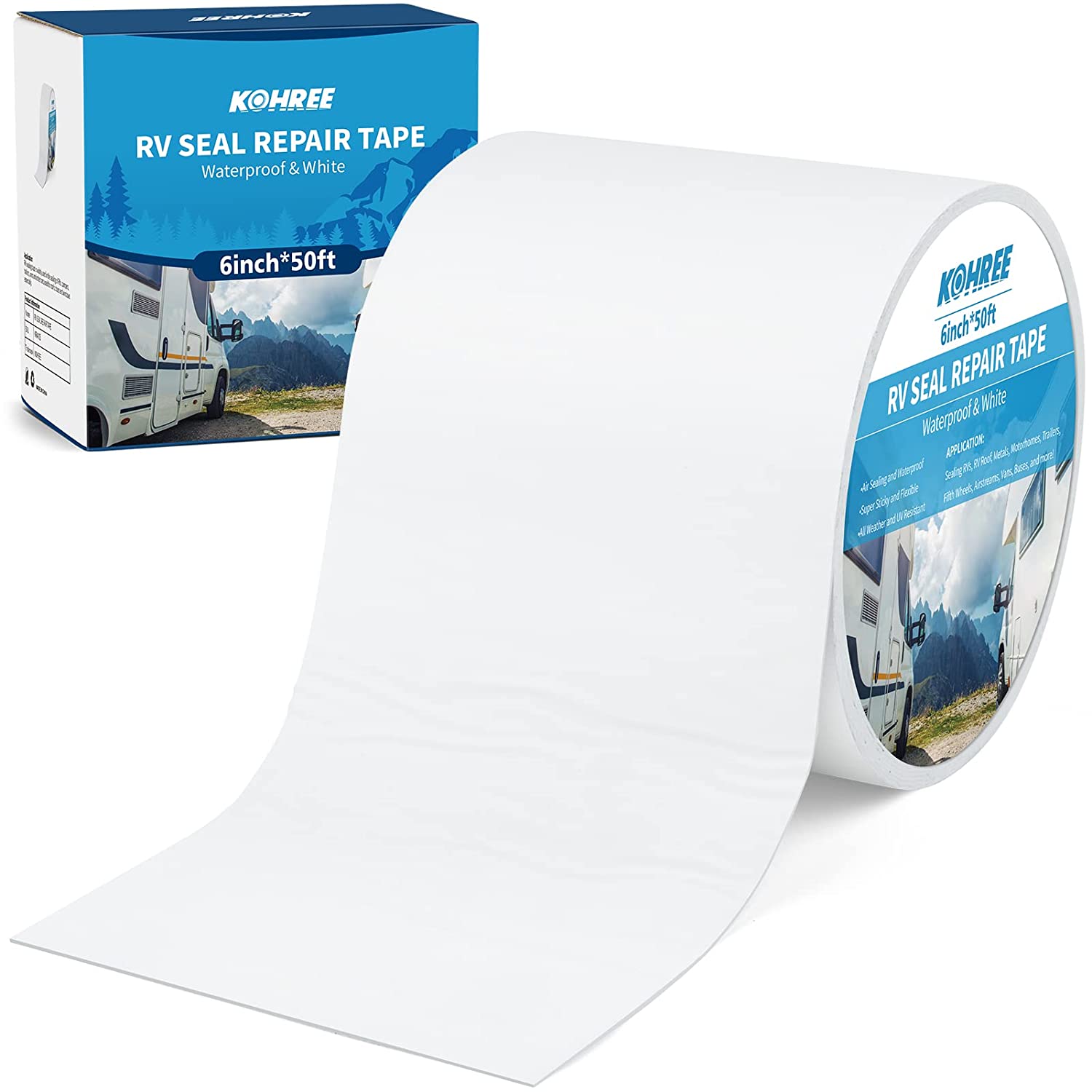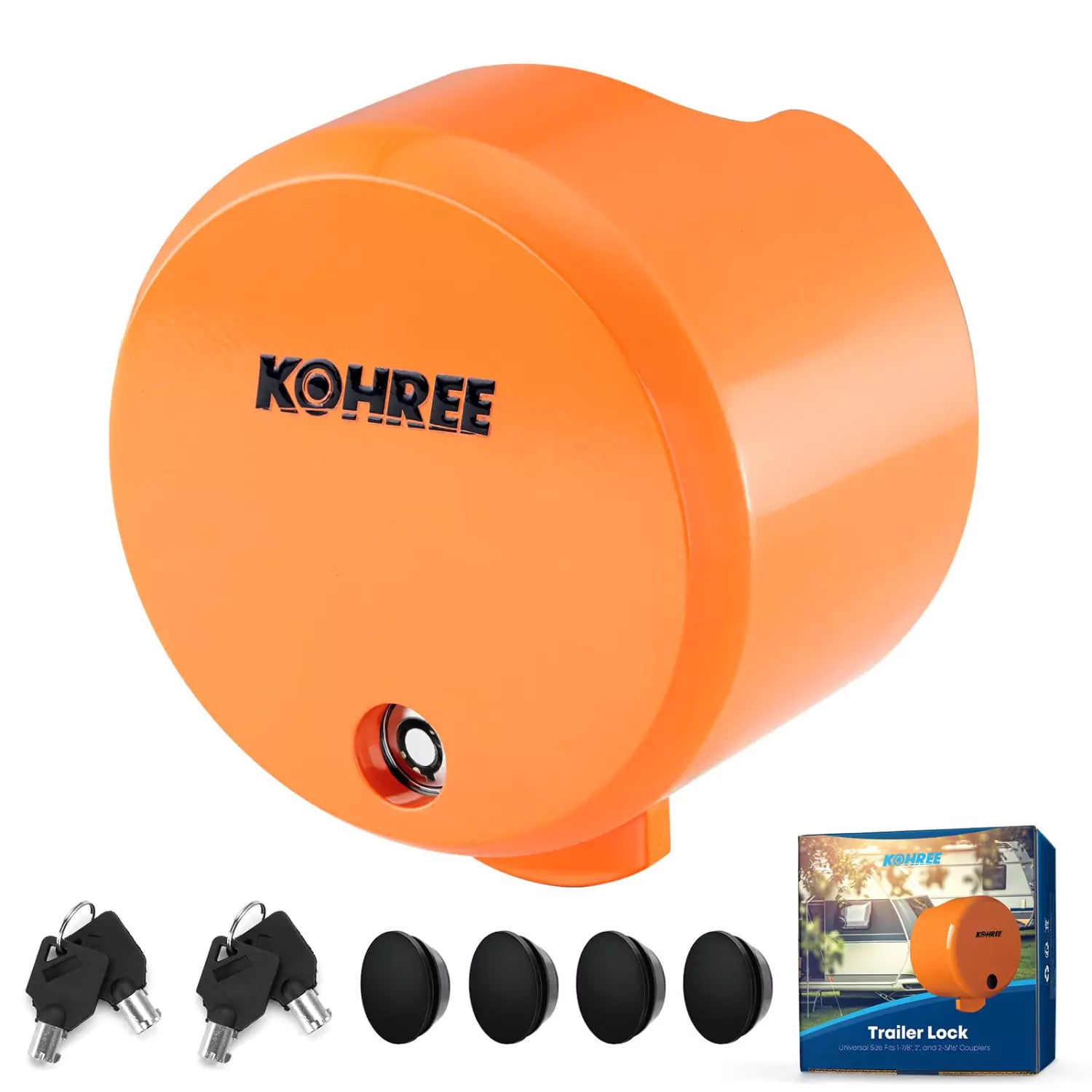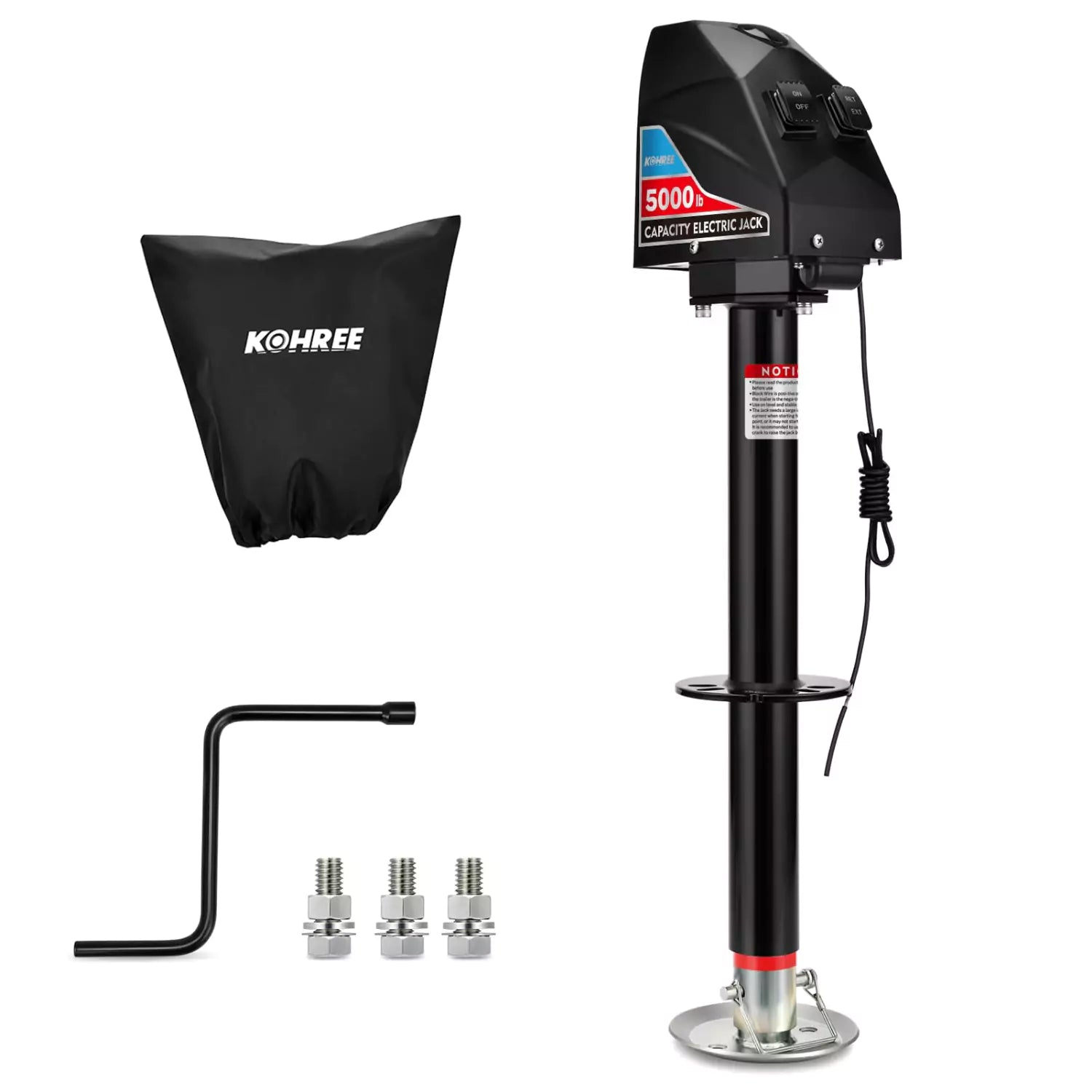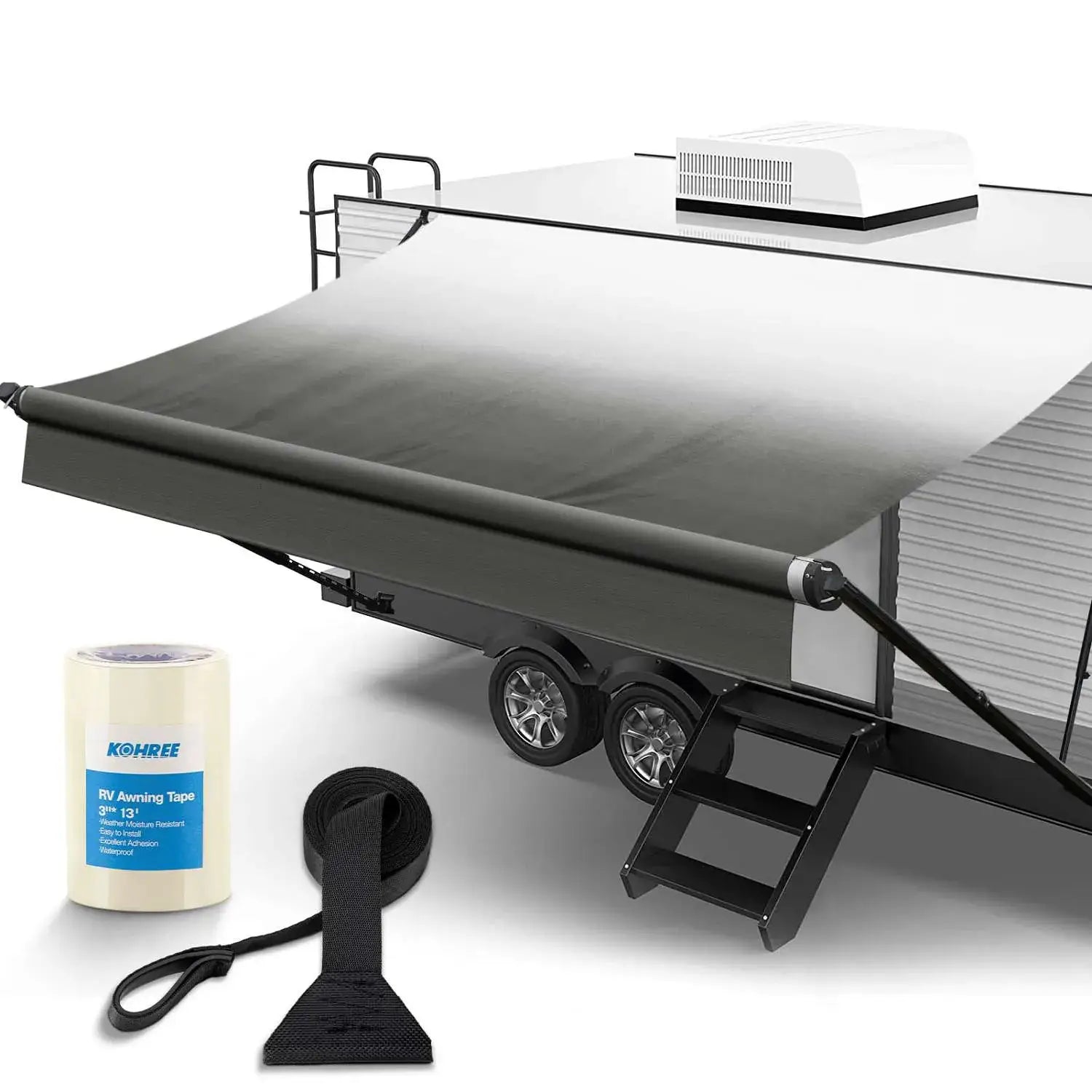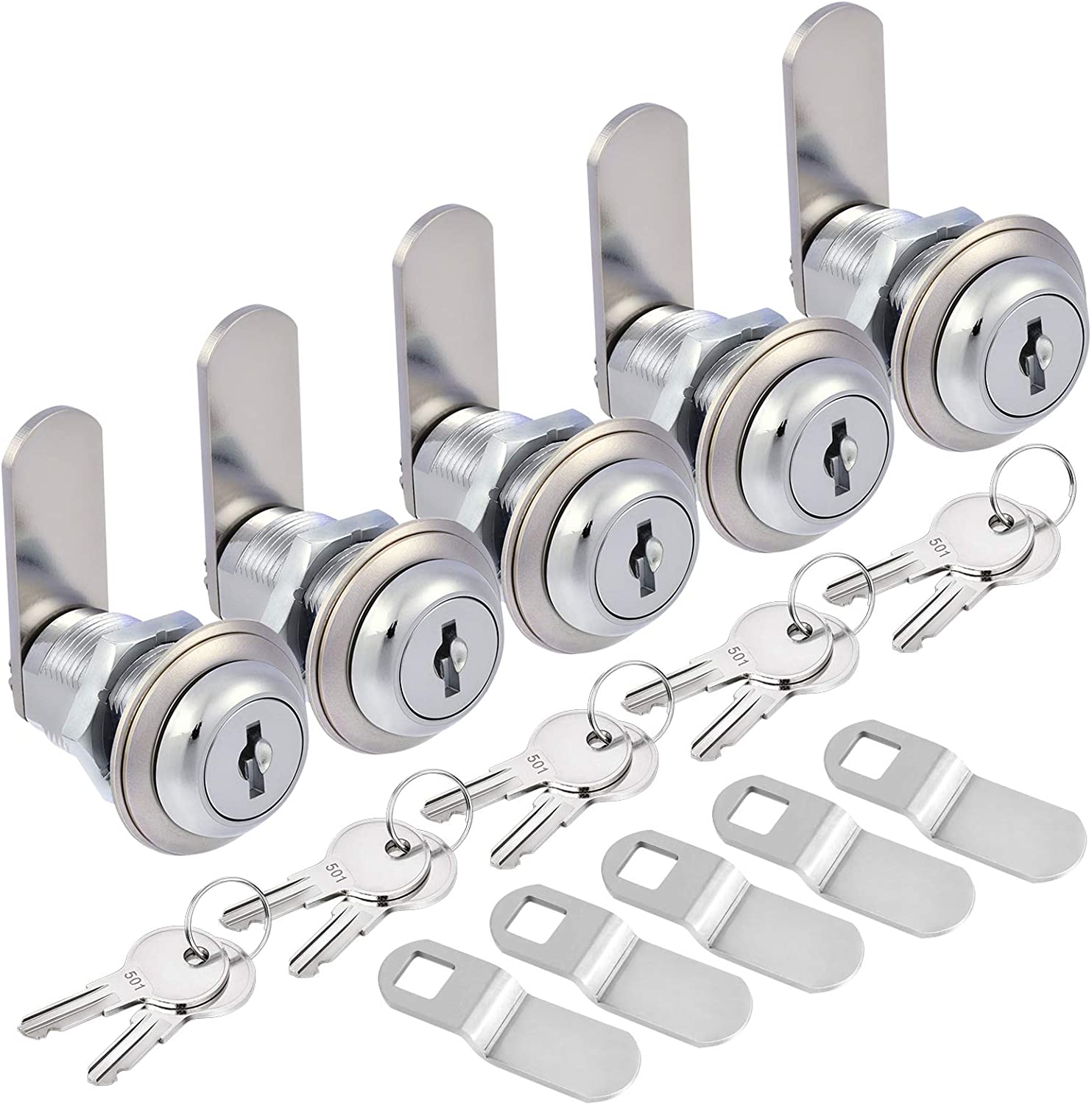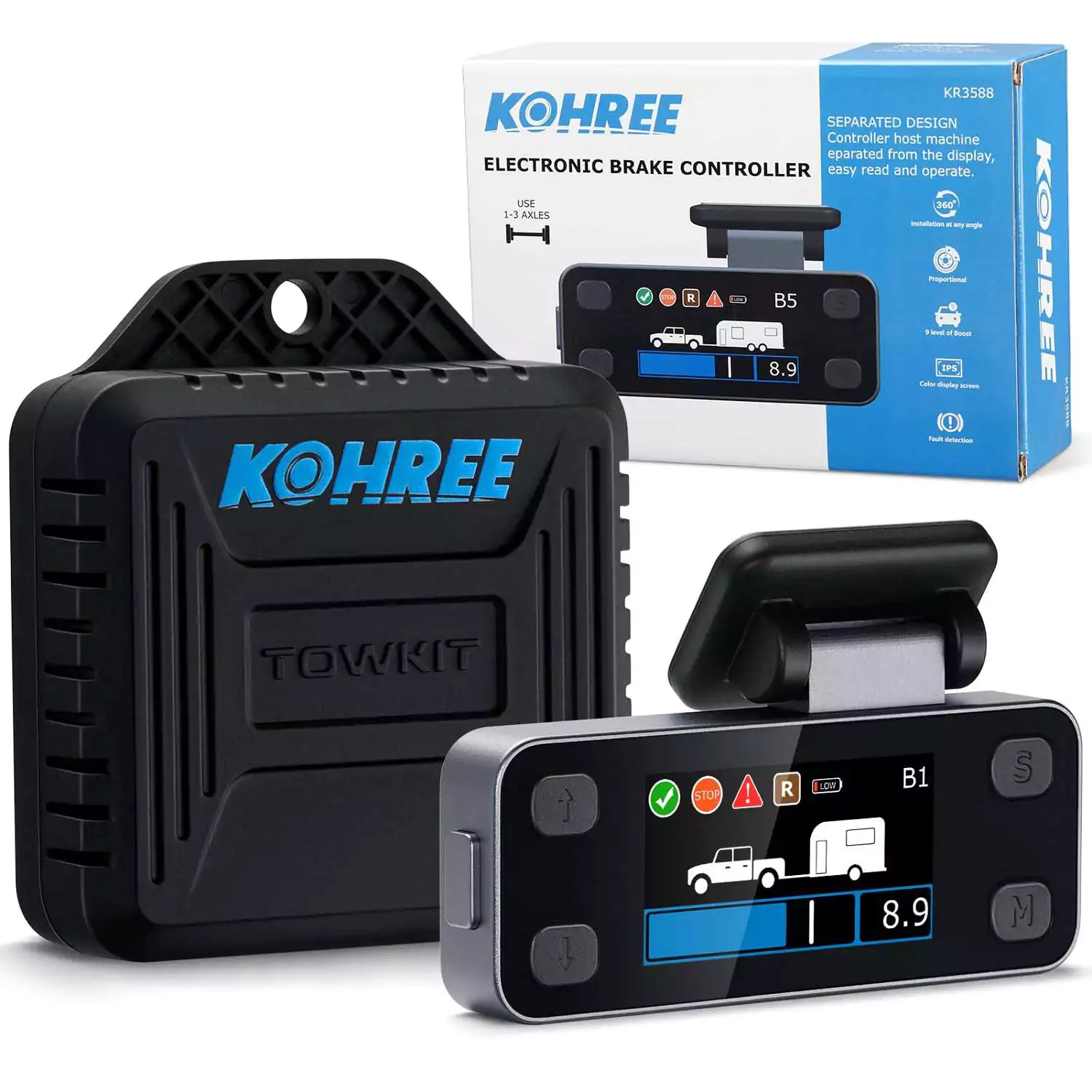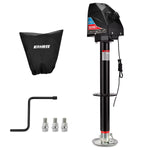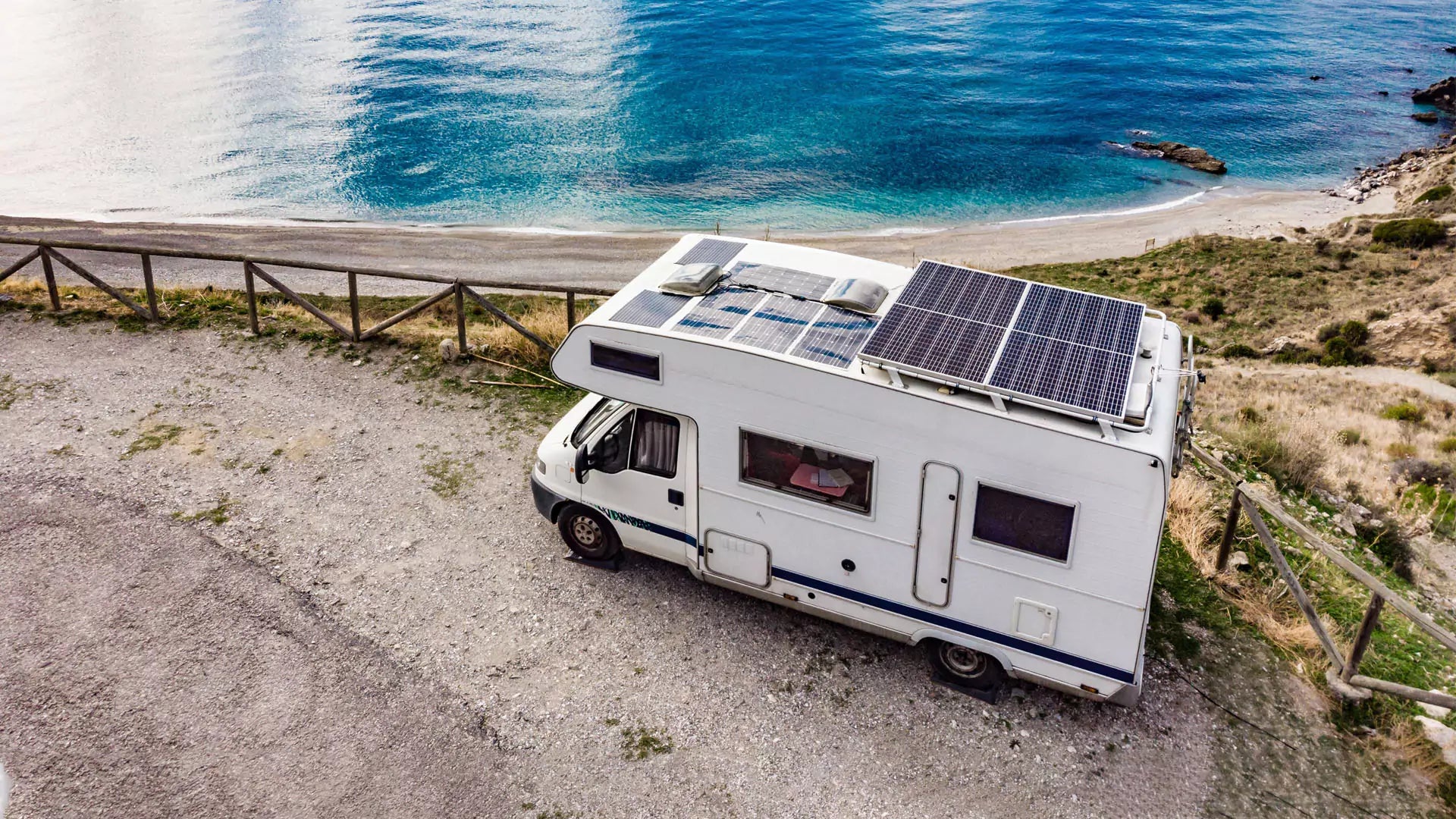Being an full-time RVer is an exhilarating experience, offering the perfect blend of adventure and comfort. But to truly enjoy all the amenities your home-on-wheels has to offer, you'll need to master the art of hooking up to shore power. Whether you're a seasoned RV enthusiast or a newbie just starting out, understanding the ins and outs of RV shore power connections is crucial for a smooth and enjoyable trip. In this ultimate guide, we'll walk you through everything you need to know about RV shore power plugs, power inlets, and outlets, ensuring you're well-equipped to power up your rig wherever your travels take you.
What is Shore Power?
While your RV and campers are running, there is at least one battery that keeps your essentials running while you're towing and supplies limited power to your lights and small appliances if you're boondocking.
But to get the most out of your trailer you'll need to hook up to shore power. Shore power refers to the electrical power supplied to your RV from an external source, typically found at campgrounds, RV parks, or even on the side of your friend's garage.
Benefits of Using Shore Power
Utilizing shore power offers numerous advantages for RV owners.
Firstly, it provides a reliable and consistent source of electricity, ensuring that all our onboard systems can function optimally. This means we can run our air conditioning, refrigerator, microwave, and other appliances without worrying about draining our RV's battery or running out of fuel for a generator.
Secondly, shore power is generally more cost-effective than relying solely on a generator or solar panels. While these alternative power sources have their place in RV living, they can be expensive to maintain and may not always provide sufficient power for all our needs.
Thirdly, using shore power is environmentally friendly. By plugging into the grid, we reduce our reliance on fossil fuels that would otherwise be consumed by a generator. This not only helps to minimize our carbon footprint but also contributes to a quieter and more peaceful camping experience for ourselves and our neighbors.
This power connection allows you to run your RV's electrical systems and appliances without relying on your vehicle's battery or generator out of the grid. But this doesn’t mean you can hook up your RV to every shore power at will.
You'll need to make sure that the power source is compatible with your trailer's internal electrical system.
Types of Shore Power Connection
Most RVs require 30-amp or 50-amp electrical service. While you may occasionally find 15-amp or 20-amp options, these are more commonly used for household appliances, such as charging stations in backyards.
Additionally, there might be a warning label near your RV's power inlet specifying the recommended amperage. If so, consult the campground management or check the electrical pedestal to verify if they can provide the required amperage.
It's essential to know your RV's specific electrical requirements as this will determine which campground power outlets you can safely use.
-
30-amp inlet
30-amp inlets are the most common power supply option for smaller to medium-sized RVs. These systems utilize a three-prong plug and can accommodate up to 3,600 watts of power. This capacity is generally sufficient for powering essential appliances and systems in smaller RVs.
-
50-amp inlet
They are designed for larger RVs with more power-hungry appliances. These systems use a four-prong plug and can handle up to 12,000 watts of power. This additional capacity allows for the operation of multiple air conditioning units, larger appliances, and more complex electrical systems.
It's important to note that adapters exist to connect a 50 amp RV to a 30 amp outlet, or vice versa. However, using an adapter will not provide the full amperage capacity the RV was designed for (physical limitation). This means you'll need to be cautious about running multiple high-power appliances simultaneously, like two air conditioners or a microwave and an air conditioner. Overloading the circuit can lead to tripping the breaker.
What You Must Know Before Hookup Your RV to Shore Power
RV electrical systems involve various wires and standards, making them seem complicated. However, it's essential to familiarize yourself with the necessary accessories before connecting to shore power to ensure safe and correct electrical connections. Let's dive in.
Extension power cord
RV power extension cords primarily consist of a male and female end. The female end is designed to connect to the RV's power inlet, while the male end plugs into a shore power outlet or generator. If the cord's length isn't sufficient, additional extension cords can be connected to increase its reach.
It's essential to invest in a high-quality, heavy-duty power cord specifically designed for RV use. These cords are typically available in lengths ranging from 25 to 50 feet, offering flexibility when parking in different campsites.
When selecting a power cord, we must ensure it matches our RV's amperage requirements (30 or 50 amp). The cord should be made of durable materials that can withstand outdoor conditions, including extreme temperatures and moisture.

RV power adapter cord
An RV adapter cord is a cable that contains a male plug on one end and a female receptacle on the other. The male plug is designed to fit into the female receptacle of the RV’s power cord, and the female receptacle is designed to accept the male plug of the shore power outlet. RV adapters are often color-coded to help users easily identify their amperage ratings and prevent incorrect connections.
The primary purpose of an RV adapter cord is to enable your RV to connect to a shore power source when the outlet's amperage or connector type doesn't match your RV's power cord. For instance, if your RV has a 30-amp power cord and the campground only offers 50-amp outlets, you can use the female end of a 30-amp to 50-amp adapter to connect to the male end of your 30-amp power extension cord. Then, plug the male end of the adapter into the 50-amp shore power outlet.
Some RV campgrounds may offer 30 or 50-amp adapter services, but these are typically temporary solutions designed to provide short-term charging and power for your RV. It's important to note that adapters cannot increase your RV's overall power capacity.
For example, while a 50-amp power cord can supply 12,500 watts of power, a 30-amp to 50-amp adapter will still only provide 3,750 watts. This means you'll need to limit your power usage to lower-wattage appliances to ensure safety.

RV power inlet
The RV power inlet, also known as the power receptacle or shore power inlet, is a crucial component of your RV's electrical system. It's the point where your RV connects to external power sources, acting as the gateway for electricity to flow into your vehicle's electrical system.
Typically located on the exterior of your RV, the power inlet is designed to withstand various weather conditions. It's usually protected by a weather-resistant cover that keeps out moisture, dust, and debris when not in use. This cover is an important feature, as it helps maintain the integrity of your electrical connection and prolongs the life of your power inlet.

RV power inlets come in different amperage ratings to match the power needs of various RV sizes and types. The most common are 30-amp and 50-amp inlets. The 30-amp inlet has three holes arranged in a triangular pattern, while the 50-amp inlet has four holes in a straight line. It's crucial to know which type your RV has, as this determines what kind of shore power you can connect to and how much electricity your RV can safely handle.

One of the key features of many RV power inlets is the twist-lock mechanism. This design ensures a secure connection between your power cord and the inlet, reducing the risk of accidental disconnections due to movement or vibration. To use a twist-lock inlet, you simply insert the plug and give it a quarter turn to lock it in place.

When connecting to shore power, always make sure your RV's electrical system is turned off before plugging in. This helps prevent any power surges or sparks that could damage your electrical components. Once connected, turn on your RV's main breaker and then gradually turn on your appliances and systems.
RV shore power outlet box
Shore power outlets originated from marine applications, where vessels require a connection to land-based power sources. In the context of RVs, shore power refers to any electrical supply available on land. The RV shore power outlet box is typically provided by campgrounds, RV parks, or even your own home (if you've installed a dedicated RV charging station). This is where you plug in your RV's power cord to access the shore power.
Commonly found in RV parks and campgrounds, shore power outlets offer a variety of amperage options, such as 20, 30, and 50 amps. As indicated by the warning labels on these outlets, it's crucial to verify that your RV's electrical system is compatible before connecting. A 30-amp power cord typically has three prongs, while a 50-amp cord has four.
Additionally, shore power outlets often include circuit breakers to protect against electrical overloads. Many RV power outlets is GFCI (Ground Fault Circuit Interrupter) protection. GFCI outlets are designed to protect against electric shock in areas where water might be present, such as kitchens and bathrooms. They have a built-in circuit breaker that trips if it detects a ground fault, cutting off power to prevent potential electrocution.

There's another type of home shore power outlet that typically has fewer outlets and provides charging services at either 30 or 50 amps. This type of outlet is more suitable for installation in your garage or backyard, offering a cost-effective and easy charging option without the need to drive to an RV park.

When using your RV power outlets, it's important to be aware of your total power consumption. While it might be tempting to plug in all your devices at once, remember that your RV has a limited amount of available power. Overloading the system can trip your circuit breakers or, worse, damage your electrical components.
How to Hooking Up Your Motorhome to Shore Power?
1. Turn off your RV's electrical system
Before making any connections, complete the parking, leveling, and stabilizing process. After that, always turn off your RV's main breaker. This will prevent any potential power surges when you plug in. While some power cords have indicator lights to show a connection, this doesn't guarantee complete safety.
2. Check your RV's amperage (30 or 50 amp)
Some power cords are hardwired to your trailer, meaning you simply plug them in. Others require you to connect one end to an outlet on the trailer and the other to the shore power source. Some power cords have indicator lights that illuminate when plugged in.
Once you've determined your RV's shore power needs, locate the RV power inlet. On many trailers, the RV power inlet is stored in the same compartment as the holding tank outlets on the driver's side. The length of your power cord will vary, so inspect it before parking to ensure you can park close enough to reach the electrical pedestal.

3. Identifying the correct outlet
30-amp inlets have three prongs in a triangular configuration, while 50-amp inlets have four prongs arranged in a semicircle. It's essential to match our RV's amperage to the correct outlet to avoid potential electrical issues.

4. Connect your surge protector
Therefore We recommend using a surge protector. This accessory plugs into the electrical pedestal, and your RV's power cord plugs into it. Surge protectors protect your RV's electrical system from power surges, shorts, voltage fluctuations, and other electrical hazards. To check for power, simply go inside and see if your protections lights are on.
5. Test the Connection
Check that power is flowing by turning on a light or two inside your RV. If you have a built-in voltage meter, check that you're receiving the correct voltage (typically around 120 volts).
If you're not receiving power, check your RV's internal circuit breakers. If they're all in the correct position, inspect the breakers on the electrical pedestal. Some campsites intentionally turn off breakers between guests. If you're still experiencing issues, contact the campground for assistance.

6. Final reminder
Don't turn on all your appliances at once. Gradually add electrical load by turning on devices one at a time. This helps prevent overloading the system. Keep an eye on your power consumption, especially if you're using high-draw appliances like air conditioners. If you trip a breaker, you may need to reduce your power usage. It's also advisable to shut everything down before disconnecting and storing your power cord.
Top Tips for Efficient Shore Power Usage
Is it Safe to Plug My RV Into Shore Power?
Yes, generally, the shore power outlets in certified campgrounds and RV parks that you find on Google Maps are safe.
As long as you follow our guidelines, operate the system correctly, and avoid overloading your RV's electrical system, you should be fine. If you have any doubts, it's always a good idea to have a professional inspect your RV's electrical system.
How to Replace My Melted RV Plugs?
While most campgrounds and RV parks have reliable power outlets, there are still some locations with unstable power that can cause low-quality plugs to melt. To avoid this issue while camping, we recommend carrying extra RV plugs as a precaution.
If you need more detailed instructions on how to replace a melted plug, check out our articles: How to replace a 30-amp RV plug and How to replace a 50-amp RV plug. These guides will help you quickly replace a melted plug and get back on the road.
How Long Power Cord Should I Use?
In my experience, a 25 to 50-foot power cord is usually sufficient for most RVs. When purchasing a longer extension cord, it's important to consider the campground layout.
Some campsites have outlets that are far apart, while others have them closer together. However, it's always a good idea to have a longer cord on hand in case you encounter a campsite with a distant power outlet.
Additionally, keep in mind that longer cords can result in greater energy loss. To prevent overheating, ensure that the cord you choose is thick enough to handle the electrical load.
Kohree Best RV Power Connections Companions
Thanks for reading this far! Now you're equipped with all the knowledge you need about shore power connections and RV electrical systems. But you might be wondering, ''Where can I find the best RV power cords and accessories to keep my RV's electrical system running safely and efficiently?''
Kohree has you covered with a complete line of high-quality and affordable RV power supply accessories. With over a decade of experience in RV parts manufacturing, our team of engineers is dedicated to designing premium power accessories to ensure your camping adventures are worry-free.
Locking Connector & LED Power Indicator
The threaded locking ring feature creates a weatherproof connection & ensures further moisture protection during outdoor use. LED power indicator glows green when the power cord is connected to the power source.
Flexible, Sturdy & Safe Construction
This power extension cord is flexible and coated with a heavy-duty flame retardant, heat-resistant PVC sheath to protect from wear and tear, as well as outdoor elements.
Plug with Grip Handle RV Adapter
Our RV extension cord features a sturdy design that prevents wire breakage, thanks to a reinforced construction and a 90° head that reduces stress on the cord. The included adjustable power cord organizer makes it easy to store and use. Ideal for RVers with 50-amp outlets who require a 30-amp/50-foot adapter.
Power Conversion Made Easy
The 30 amp (TT-30P) male to 50 amp (14-50R) female adapter cord and 50 amp (14-50P) male to 30 amp (TT-30R) female adapter cord is your go-to solution for converting campground power to suit your 30 or 50 amp RV, ensuring a seamless transition without the need for additional equipment.

Robust Construction for Durability
Our RV power adapter cords boast 18-inch length, this RV dogbone adapter provides enhanced maneuverability. Its design allows for a full 180-degree bend from the male to the female end, offering greater flexibility in tight spaces. They are crafted with 100% copper and encased in a heavy-duty, flame-retardant, and heat-resistant PVC sleeve, the Kohree RV electrical adapter is built to withstand the rigors of outdoor use, protecting against wear and tear.

Versatile Use Across Various Vehicles
Our RV power cord is perfect for camper vans, trailers, motorhomes, and caravans, this 30-amp male to 50-amp female adapter ensures quick and reliable power supply to essential appliances such as refrigerators, air conditioners, microwaves, roasters, kettles, lamps, and more.
This type of RV adapter power cord is different from our previous models. It comes equipped with a surge protector to safely connect your RV to household power and protect your RV's electrical system from damage caused by power surges.
Convenient Home-to-RV Power Connection
Our RV adapter power cord with surge protector is constructed from high-quality pure copper and heavy-duty PVC, the surge guard is both fireproof and high-temperature resistant. This robust build helps identify and protect against faulty power, ensuring the safety of your RV and camper.
The Kohree 15 Amp NEMA (5-15P) to 30 Amp NEMA (L5-30R) adapter with surge protector and 15 amp NEMA (5-15P) to 50 amp NEMA (SS2-50R) adapter with surge protector makes it simple to hook up your 30 amp or 50 amp RV to your household power supply. This enables you to run low-power appliances like your RV refrigerator at home before hitting the road, ensuring everything is prepped and ready.

Unmatched Surge Protection
The RV surge protector delivers 8000 joules of protection, shielding your RV's electronics from voltage spikes and surges that can occur during storms or power fluctuations. This instant-response safeguard acts within a nanosecond to keep your devices safe.

Circuit Analysis with LED Indicators
By using this RV power cord with a surge protector, you can easily check the integrity of your power source and detect wiring issues with the help of diagnostic LEDs. These lights indicate correct wiring, open ground, reverse polarity, open hot, open neutral, hot/ground reverse, and hot on neutral with hot open.

Secure and Weather Resistance Design
We offer 30 amp RV shore power inlet and 50 amp RV shore power inlet. They boast a twist-lock mechanism and a waterproof cover, safeguarding the inlet from water ingress, UV rays, dust, and other environmental hazards.
You can lock your cord set securely into the inlet with ease, eliminating any wiggling or looseness. The RV power inlet comes with user-friendly wire terminations, streamlining the installation process.

Safety and Quality Assured
The Kohree shore power inlet, featuring 3 poles and 4 wires, is ETL-rated, ensuring a safe and reliable connection for you and your loved ones. Constructed from UV-stabilized, glass-filled polyester, each 30 amp RV plug resists corrosion and stands up to harsh conditions. Measuring 3.7''(length) x 3.3'' (wide) x 3.2'' (high), it includes a cutout of 2.875''(30 amp), 2.3''(50 amp) and 4 stainless steel pan head screws for mounting.

Enhanced Security with Lockable Design
The Kohree 30A RV power outlet box and 50A power outlet box feature an enclosed, lockable swing cover, allowing you to secure the doors at the bottom and prevent unauthorized access or tampering with your power supply.
Built from heavy-gauge iron, the Kohree RV outlet box stands up to the elements, protecting against rain, UV rays, and dust. This high-quality construction makes it suitable for both indoor and outdoor installations, providing reliable power hookups and charging options.

Easy Installation and Wiring
The upgraded RV shore power outlet box comes with four pre-drilled holes, making installation a breeze. It includes three multi-size gaskets for various wire gauges (1", 1/2", 3/4"), and multiple sides for wiring, ensuring you can connect through any existing hole without needing to drill, saving you time and effort.

Spacious Interior Design
Our RV receptacle box offers ample internal space, accommodating even large-handle 30A / 50A RV cords and heavy-duty 30 / 50 amp-rated wires. This spacious design ensures you can easily close and lock the door, maintaining a neat and secure connection.
Ideal for sharing electricity with RVs, campers, trailers, electric cars, generators, and more, our RV outlet box offers a temporary hookup solution.

Conclusion
Hooking up our RV to shore power is an essential skill for any RV enthusiast. By understanding the basics of shore power, having the right equipment, and following proper procedures, we can ensure a safe and comfortable camping experience.
Always inspect your equipment and the shore power pedestal before making connections, use appropriate safety devices like surge protectors, and monitor your RV's electrical system for any signs of trouble.
Be sure to stock up on Kohree's premium RV power accessories before you hit the road. Enjoy all the comforts of home while exploring the great outdoors. Happy camping and safe travels!
